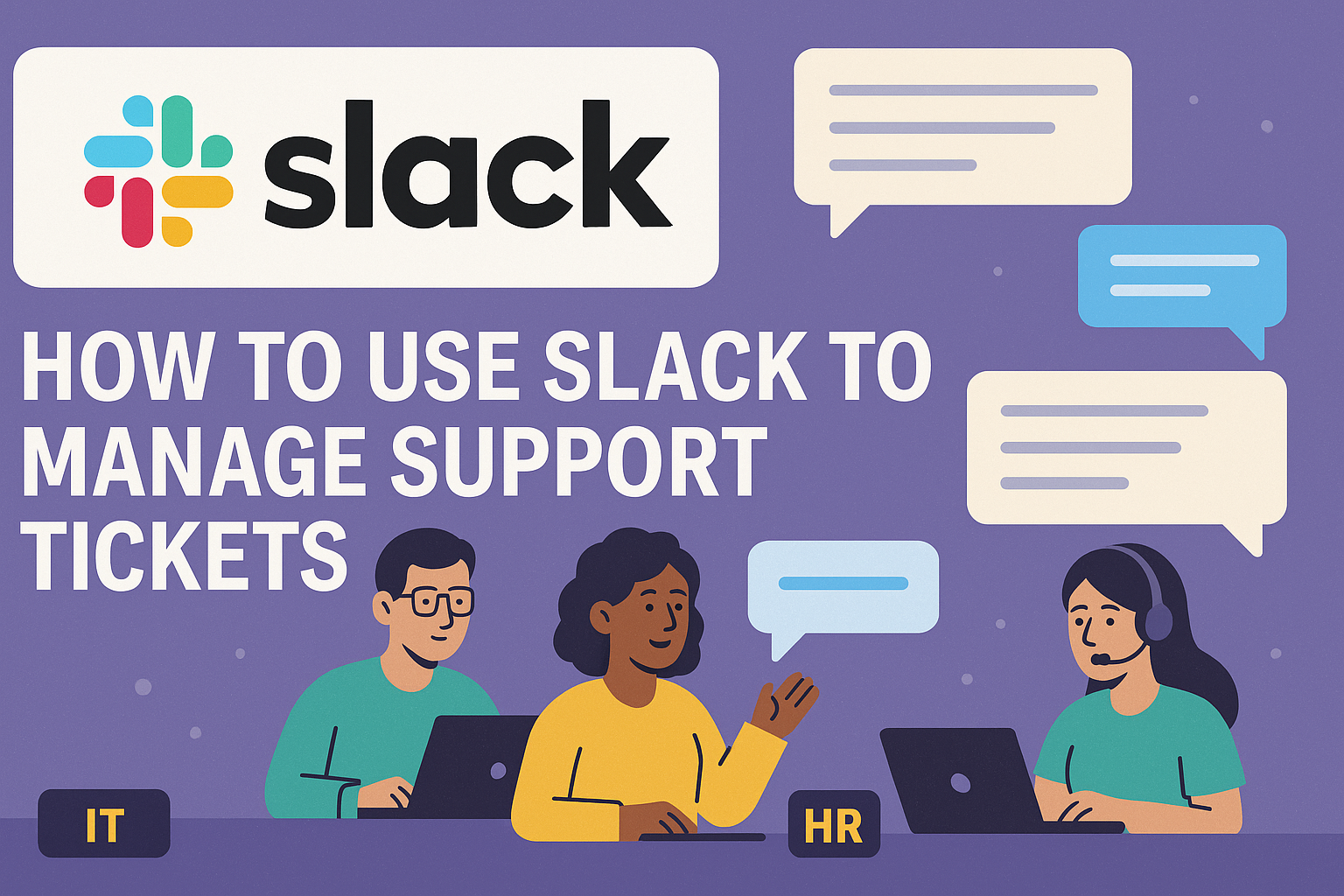Can Slack Be a Support Platform for Your Team?

More and more, we’re seeing Slack become the main communication hub for many companies, thanks to its intuitive interface, seamless messaging, and, of course, the fun emojis that make online interactions more engaging.
But the real question is: Can requesting a laptop replacement or filing for leave be as simple and effortless as chatting with a colleague?
Slack as a Ticketing Platform
Slack isn’t inherently designed to be a support tool, but with the right structure and tracking mechanisms in place, it can absolutely function as one. While Slack has many benefits for organizing requests, it has many drawbacks, including the inability to assign ownership and the lack of filtering and sorting of issues.
That said, there are many tools coming to market that make Slack a smooth and scalable tool for managing support requests.
Who Uses Slack for Support?
Slack is already the main communication tool for many companies, making it a natural place to manage support. It reduces context-switching, speeds up responses, and keeps support conversations transparent and accessible.
Teams like IT, HR, and Customer Support are now using Slack to handle requests and streamline support—right where work is already happening.
IT Support From forgotten passwords to hardware troubleshooting, IT teams are constantly fielding issues that halt productivity. Waiting on email responses can be frustrating. Slack speeds up these interactions, enabling quicker resolutions and reducing downtime.
HR Leave requests, payroll and benefits inquiries, onboarding and offboarding are among the common support issues HR teams receive—and Slack helps keep those conversations moving without clogging inboxes.
Customer Support teams use Slack to talk to customers over shared channels via Slack Connect. This provides a great way to build relationships with customers and ensure quick responses to issues in the tool you're already using every day.
So, Is Slack Enough?
Here’s the thing: Slack gets you most of the way there. It brings requests into a single, familiar space. But it’s not a full support platform on its own. It wasn’t built for managing ticket lifecycles, handling recurring requests, or maintaining long-term knowledge.
It’s missing the backbone: something that keeps track of what’s been asked, what’s changed, and what needs to happen next—without someone manually updating it every time.
That’s where a self-updating knowledge layer becomes essential.
The Role of Knowledge in Slack-Based Support
If Slack is the interface, knowledge is the infrastructure.
Behind every resolved request is some kind of knowledge—whether it’s a benefits policy, a device replacement form, or a how-to guide. The problem is, those resources are often scattered, out of date, or just hard to find when you need them.
What changes the game is having a knowledge system that updates itself automatically. One that learns from past requests, captures what’s been resolved, and keeps answers current—without constant manual upkeep.
That way, when someone asks a common question in Slack, the answer is already there—surfaced instantly, consistently, and accurately.
How to Actually Use Slack as a Ticketing Tool
Here are a few simple ways to get started:
- Create dedicated channels for each team (IT, HR, Ops, etc.)
- Use threads to keep each request organized
- Pin important resources or forms at the top of each channel
- Track recurring requests and feed them into your knowledge base
- Most importantly—add a purpose-built tool that natively integrates with Slack to automate those steps.
Addressing the Limitations
Integrating a ticketing platform that addresses Slack’s limitations is the best solution. Tools like Unthread further simplify support by automating ticket assignment and escalation, and by generating AI responses to handle inquiries before a human needs to step in.
Even better, they help build that self-updating knowledge layer in the background—so Slack doesn’t just become your support front-end, it becomes a smarter one every day.
Conclusion
Slack makes support fast, visible, and easy to access. But on its own, it’s not enough. Layer in the right tools, especially those that help you capture and maintain knowledge over time, and Slack becomes a powerful support platform—without the overhead of a traditional helpdesk.

